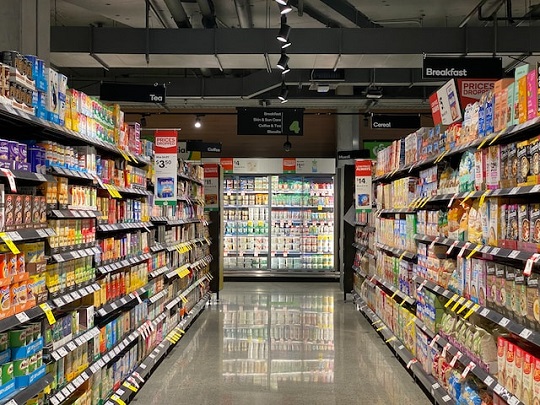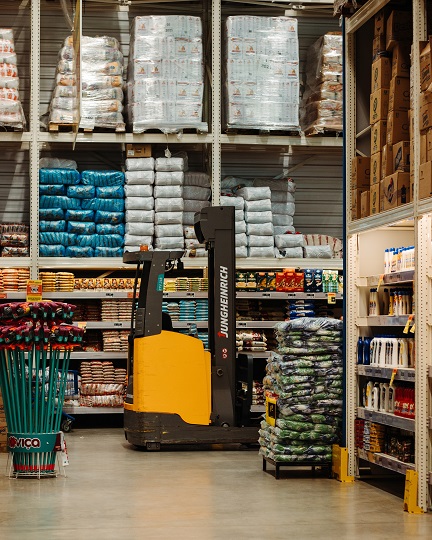In the fast-paced world of consumer goods, you will often come across products with a short shelf life. As a business, it becomes crucial for you to manage the supply chain of these products effectively to prevent them from expiring before reaching the end consumer.
This blog post will delve into the challenges associated with products that have a limited shelf life, offer examples of such products, and highlight key points that you should consider when managing the supply chain for these products.
But, before we delve deeper into this topic, make sure you have also followed my LinkedIn account to gain more insights on supply chain management.
Table of Contents
Understanding Products with Short Shelf Life
When it comes to managing your supply chain, it is essential for you to have a clear understanding of products with a short shelf life.
These are items that possess a limited period of freshness, usability, or effectiveness before they reach their expiration date.
As a business, it is important for you to recognize that these products can encompass a wide range of goods, including perishable foods, pharmaceuticals, cosmetics, and other consumer goods.
The shelf life of these products is influenced by several factors that you need to be aware of.
First and foremost, the nature of the product itself plays a significant role.
For example, fresh produce such as fruits, vegetables, and herbs have a shorter shelf life compared to canned goods or dry ingredients.
Additionally, the specific ingredients used in the manufacturing process can affect the product’s longevity. For instance, organic or all-natural products may have a shorter shelf life due to the absence of certain preservatives.
Moreover, the manufacturing processes employed can impact the shelf life of a product.
Certain manufacturing methods or packaging techniques can enhance or extend the product’s freshness and usability.

Conversely, inadequate processes may lead to a shorter shelf life and increase the risk of product expiration.
Furthermore, storage conditions throughout the supply chain are crucial in preserving the quality and extending the shelf life of these products.
Factors such as temperature, humidity, light exposure, and proper handling practices play a pivotal role.
Implementing appropriate storage and handling protocols is vital to ensure that these products remain fresh and effective for as long as possible.
By understanding these key aspects, you can make informed decisions and take necessary steps to manage the supply chain effectively for products with a short shelf life.
This knowledge allows you to implement strategies that minimize waste, maintain product quality, and ultimately deliver fresh and satisfactory goods to your customers.
You might also like:
- Making the Right Call: Selecting the Best Procurement Approach – Direct Appointment or Bidding?
- Maximizing Your Profitability: How Smart Inventory Policies Make a Difference for You
Examples of Products with Short Shelf Life
When it comes to managing your supply chain, it is important for you to be familiar with examples of products that have a short shelf life.
Understanding these examples will help you develop effective strategies to prevent product expiration and ensure customer satisfaction. Here are some common categories of products with limited freshness.
Perishable Foods
- Fresh produce like fruits, vegetables, and herbs: These items have a relatively short shelf life due to their natural tendency to deteriorate over time.
- Dairy products such as milk, yogurt, and cheese: These products require refrigeration and have specific expiration dates to maintain their quality and safety.
- Meat, poultry, and seafood: These protein-based products are highly perishable and require careful handling and temperature control to avoid spoilage.
Pharmaceuticals and Medical Supplies
- Vaccines and biologics: These medical products often have strict storage requirements and limited expiration dates to ensure their effectiveness.
- Certain prescription drugs: Some medications, particularly those with active ingredients prone to degradation, may have shorter shelf lives and must be dispensed accordingly.
- Medical devices with time-limited effectiveness: Devices such as test kits or diagnostic tools may have expiration dates due to calibration or component deterioration.
Cosmetics and Personal Care Items
- Natural skincare products with minimal preservatives: These products often have a shorter shelf life compared to those with stronger preservatives, as they rely on natural ingredients that can degrade over time.
- Organic makeup products: Similar to natural skincare products, organic makeup may have a limited shelf life due to the absence of synthetic stabilizers or preservatives.
- Fragrances and perfumes: These items can deteriorate over time, affecting their scent and quality, and often come with recommended expiration dates.
By being aware of these examples, you can tailor your supply chain management strategies to address the specific challenges associated with each product category.
This includes implementing appropriate storage and handling practices, optimizing inventory management, and maintaining effective communication with suppliers and distributors to ensure timely delivery of fresh and safe products to your customers.
You might also like:
- From Chaos to Order: How to Design a Highly Efficient Distribution Network
- Mastering Fluctuating Demand: Key Strategies for Manufacturing Success
Key Points in Managing the Supply Chain for Products with Short Shelf Life
When it comes to managing your supply chain for products with a short shelf life, there are several key points that you need to consider.

By focusing on these aspects, you can ensure that your supply chain operates efficiently, minimizing the risk of product expiration and maximizing customer satisfaction.
Here are the key points to pay attention to.
Effective Demand Forecasting
It is crucial for you to accurately forecast the demand for products with a limited shelf life. By analyzing historical data, market trends, and customer insights, you can predict demand patterns and produce or distribute the right quantity of products within their shelf life.
Efficient Inventory Management
Optimizing your inventory levels is essential to minimize waste and avoid having excess stock of perishable goods.
Adopting just-in-time (JIT) inventory management practices can help ensure that fresh products are continuously available, reducing the risk of expiration.
Proper Storage and Handling
Maintaining ideal storage conditions, such as appropriate temperature, humidity, and light exposure, is critical for products with a short shelf life.
Implement robust quality control measures and conduct regular inspections to identify and remove damaged or expired items from the supply chain.
Streamlined Supplier Relationships
Establishing strong relationships with your suppliers is vital to ensure the timely delivery of fresh and high-quality materials.
Maintain regular communication, conduct supplier audits, and perform performance evaluations to foster a reliable supply chain.
Efficient Logistics and Distribution
Speed and efficiency in transportation play a significant role in minimizing the time products spend in transit.
Optimize your transportation routes, utilize temperature-controlled vehicles, and implement real-time tracking systems to reduce the risk of product expiration during transit.
Collaboration and Communication
Effective collaboration and communication among all stakeholders in your supply chain are essential. This includes suppliers, manufacturers, distributors, and retailers.
By sharing accurate and up-to-date information, you can make informed decisions and take prompt action to avoid expired products.
By focusing on these key points, you can effectively manage your supply chain for products with a short shelf life.
This will help you minimize waste, maintain product quality, and ensure that fresh and high-quality goods reach your customers, leading to increased satisfaction and improved overall performance in the consumer goods industry.
Conclusion
Managing your supply chain for products with a short shelf life necessitates meticulous planning, coordination, and meticulous attention to detail.
By implementing effective demand forecasting, efficient inventory management, proper storage and handling practices, streamlined supplier relationships, efficient logistics and distribution, and fostering collaboration and communication, you can mitigate the risk of product expiration and ensure the delivery of fresh and high-quality goods to your consumers.
Successfully managing these products not only leads to increased customer satisfaction but also minimizes waste and enhances profitability in the consumer goods industry.
Hope it is useful!
Please share this article with your colleagues as well, so that they can also benefit from it. Follow my LinkedIn account for more insights on supply chain management. All articles on this blog are free for you to use for any purpose, including commercial use, without the need for attribution.

 by
by 

